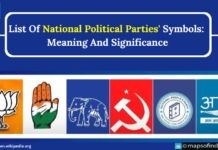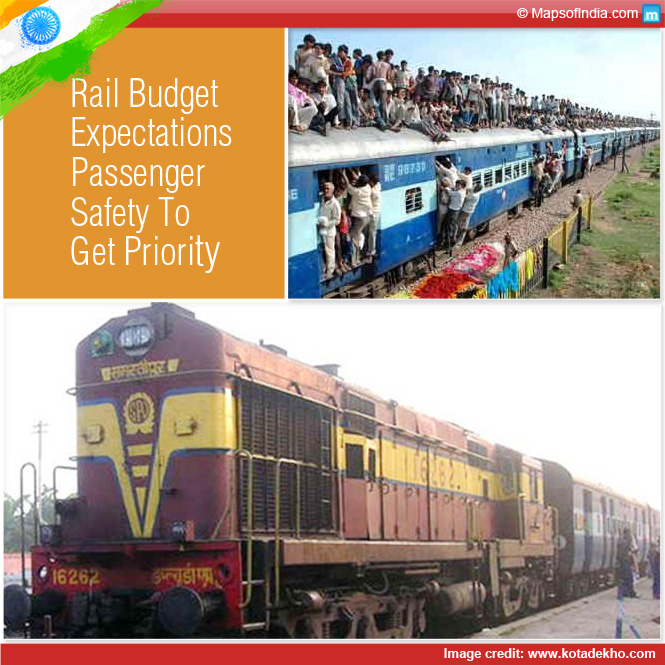India is the second-largest railway network in the world, the railways forming the arteries and veins of our country and being an integral part of national growth. However, the fact remains that the railways are a funds-starved sector of our country and some immediate refurbishment is necessary. Such a vast network, instead of being a consistent generator of revenue, is incurring steady losses, as is evident from the government’s estimate of a loss of Rs 24,000 crore for the period of 2012-2013. This is in sharp contrast with the revenue generated from the railways in the last decade under the National Democratic Alliance government when Nitish Kumar (currently the chief minister of Bihar) was holding the portfolio of the Railway Ministry. Even under the notorious Laloo Prasad Yadav, the railways managed to show some profit. However, when Mamata Banerjee (current chief minister of West Bengal) was vested with the responsibilities of the Railway Ministry, the railways once again succumbed to loss-making. While the railways are consistently incurring losses, passenger facilities are degrading at almost the same rate. As a result of the poor technical maintenance and lack of coordination, railway accidents are now a commonplace affair.
Since January 2013, the Prime Minister Manmohan Singh-led UPA Government has been considering revamping the railways. One of the steps in this direction is an increase in tariff. Previous attempts to increase the passenger fare were effectively thwarted by the Trinamool Congress Party. Even ex-railways minister Dinesh Trivedi lost his portfolio upon his mere suggestion of hiking passenger fares, which did not go down well with Mamata Banerjee. It is to be mentioned here that Mamata Banerjee had handed over her responsibilities of the Railways Ministry to Dinesh Trivedi when she had taken office as the chief minister.
Necessity of hike in passenger fares and the fuel issue to combat the widening fiscal deficit
It has been almost a decade now without any revision in passenger tariff structure. One can travel a distance of 864 miles (about 1,390 km) from New Delhi to Mumbai, with a sleeper-class ticket costing as little as Rs 400. As correctly pointed out by the ex-railways minister Pawan Kumar Bansal, a well oiled railway machinery can generate an exchequer of Rs 66 billion. He further mentioned that, “Facilities and safety measures will improve with an increase in fares”. Besides, diesel, the fuel used by railway engines, is also considerably financed by the government. A beleaguered railway system, along with highly subsidized diesel fuel rates, are proving to be a consistent drain on the economy of the country, which in turn has contributed to the widening fiscal deficit. On top of this, Montek Singh Ahluwalia, one of the prime policy makers at the CM’s office, had cautioned the CM that India’s economic growth rate could possibly get stunted at 5-5.5% if new policies were not implemented immediately. Rating agencies Standard & Poor’s and Fitch had posted a warning that India might altogether lose its credibility as a possible investment ground, which would obviously eliminate India from the BRICS group, the current members of which are countries like Brazil, South Africa, China and Russia.
So in an effort to bridge the widening fiscal gap and realign the economy of the country with the global standards, the PM took prompt measures like lowering the subsidies of domestic fuel (LPG and diesel) and opening up the retail sector to FDI (Foreign Direct Investment). The resuscitation of the railways system through a revised passenger tariff is only a part of the bigger picture.
Reaction of railway passengers to the increase in railway fares
The hike was focused more on the supplementary charges rather than the passenger fare itself. The increase was in the peripherals, like fares for super-fast trains, reservations, cancellations and tatkal, along with a revised fuel surcharge which in turn would increase the freight rates.
The reaction of the commuters to the central government’s decision on the revised passenger fares can be best described as one of dismay. As expressed by Rahul Jha, a localite, “This increase in railway fares is creating a lot of problems for us. Not just railway fare but prices of all the products are increasing every day and hence whether it is youngsters or senior citizens, everybody is suffering”. The general feeling prevalent among the commuters of Chennai is that the burden of this fare revision will have to be borne by the common people. Suresh, a localite, expressed his disappointment, “Common people will definitely suffer as it will affect their travelling, time and price list”. The railway commuters of Delhi reacted in a predictable manner. Neha Jindal , a regular New Delhi commuter disapproved the government’s decision, “They should bring the fares back down. They have increased the reservation charges, they have increased the cancellation charges, but they must take these fares back”. A similar reaction was observed among the commuters of Bhopal who hit back at the UPA government for not preserving the interest of the passengers. As commented by Ashok Parsai, a localite, “This will hurt the middle class, as the common man cannot fulfill his daily needs”.
A further hike in the railway fares anticipated
Following the hike on January and April 1, 2013, the media apprehends that the government may further introduce an increase of 3% on the passenger fares from October 7, 2013. Under the proposed increment plan, AC and sleeper class will witness an increase of fare by 2%, while freight charges will increase by 1.7%. As per the statement of the present railways minister Mallikarjun Kharge on October 4, 2013, “Fuel Adjustment Component (FAC) was announced in the budget and as per the budget proposal it should have been implemented from October 1. The file containing the FAC proposal has come to me and I am examining it and a decision will be taken shortly”. When faced with repeated enquiries regarding a revised rate structure for both passenger and freight inclusive of the FAC, Kharge replied, “I am examining it. As soon as we arrive at some conclusions, then we will decide on it.” As per the Railway mandates, the tariff structure for passenger and freight are to be revised twice a year, keeping in consideration the market scenario and the expenditure. As the current estimation predicts, an expenditure of Rs 1,200 crore is expected for the next six months. Railways, however, has introduced a 15% ‘busy season charge’ applicable to all materials effective from October 1, 2013.
Conclusion
While the increase in the passenger fare is a source of disappointment for commuters, it is to be kept in mind that railways tariffs had remained the same for the last nine years whereas all other passenger transports witnessed an increase in the passenger fares. The increased energy costs and maintenance costs necessitate a revision. The increase in the fares is mainly an attempt on the part of the government to generate more revenue from the Railways sector, which in turn will be used to revamp the current creaky infrastructure.
Related Links:




